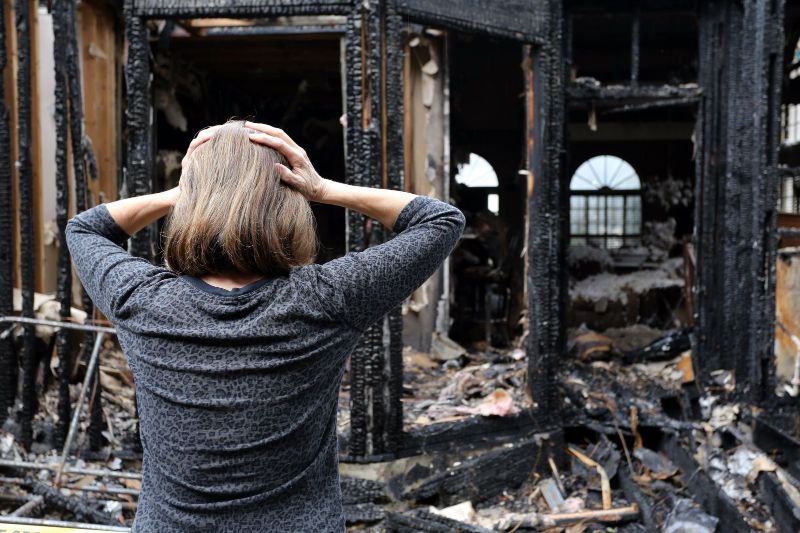When a fire strikes a property, the aftermath can be devastating. Fire damage not only affects the structural integrity of the building but also poses significant health hazards. Fire damage restoration is a crucial process that requires careful attention to safety protocols. In this article, we will explore the potential health risks associated with fire damage and discuss the importance of prioritizing safety during the restoration process.
Health Hazards from Fire Damage
Smoke and Soot Exposure
Smoke and soot are byproducts of a fire and can cause severe health issues when inhaled. They contain a mixture of toxic chemicals, such as carbon monoxide, formaldehyde, and volatile organic compounds (VOCs). Prolonged exposure to these substances can lead to respiratory problems, eye irritation, skin allergies, and even long-term health complications.
During fire damage restoration, professionals must wear appropriate personal protective equipment (PPE), including masks, gloves, and coveralls, to minimize direct contact with smoke and soot residues. The use of industrial-grade air purifiers and vacuums with HEPA filters is also essential to remove airborne particles effectively.
Mold Growth
After a fire, the water used for extinguishing the flames can saturate the affected areas. Moisture, combined with the warm environment, creates an ideal breeding ground for mold and fungi. Exposure to mold spores can trigger allergic reactions, respiratory problems, and other health issues.
To prevent mold growth, it is crucial to thoroughly dry and dehumidify the affected areas during the fire damage restoration process. Professionals should use moisture meters and thermal imaging cameras to identify hidden moisture pockets and ensure complete drying. Additionally, proper ventilation and the use of antimicrobial treatments can help inhibit mold growth.
Structural Instability
A fire can weaken the structural integrity of a building, making it unsafe for occupancy. Structural damage, such as compromised walls, ceilings, and floors, can pose a significant risk of collapse during restoration efforts. Professionals must conduct a thorough assessment of the structural stability before entering the premises and take necessary precautions to ensure their safety.
Implementing safety measures like temporary supports, shoring, and barricades is essential to prevent accidents and injuries. It is crucial to work with trained and experienced professionals who are knowledgeable about structural engineering principles to carry out the restoration process safely.
Asbestos Exposure
Older buildings, particularly those constructed before the 1980s, may contain asbestos-containing materials (ACMs). When these materials are damaged by fire, asbestos fibers can be released into the air, posing a severe health hazard. Inhalation of asbestos fibers can lead to lung cancer, asbestosis, and mesothelioma.
Before commencing any restoration work, professionals should conduct asbestos testing to identify the presence of ACMs. If asbestos is detected, specialized abatement procedures must be followed to ensure the safe removal and disposal of the hazardous materials. Only licensed asbestos abatement contractors should handle such tasks.
Safety Measures during Fire Damage Restoration
Training and Certification
Fire damage restoration professionals should undergo comprehensive training and certification programs to develop a strong understanding of safety protocols. They must be aware of the potential health hazards associated with fire damage and possess the knowledge to mitigate risks effectively. Regular training updates and certifications help ensure that they stay up-to-date with the latest industry standards.
Personal Protective Equipment (PPE)
The use of appropriate PPE is crucial during fire damage restoration. Respirators, gloves, goggles, and protective clothing help minimize exposure to hazardous substances and protect the restoration workers from potential health risks. PPE should be properly fitted, regularly inspected, and replaced when necessary.
Ventilation and Air Filtration
Proper ventilation is essential to remove smoke, soot, and other airborne contaminants during the restoration process. Portable air scrubbers, high-efficiency particulate air (HEPA) filters, and exhaust fans can improve indoor air quality and create a safer working environment. Professionals should ensure that the restoration area is adequately ventilated throughout the process.
Fire damage restoration is a complex and challenging task that requires a strong focus on safety. The potential health hazards associated with fire damage demand strict adherence to safety protocols and the use of proper equipment and techniques. By prioritizing safety, restoration professionals can not only protect their own well-being but also ensure the health and safety of the occupants once the property is restored.

